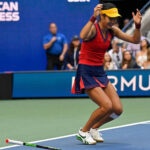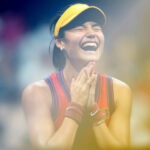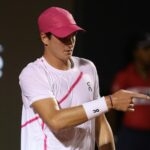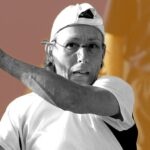January 4, 1981: The day unheralded Brian Teacher won his first and only Grand Slam title
Every day, Tennis Majors looks back at some of the biggest moments in tennis history. In December 1980, the in-form Brian Teacher decided to pull out of the Australian Open but a stroke of luck ensured he got back in and went on to win the title
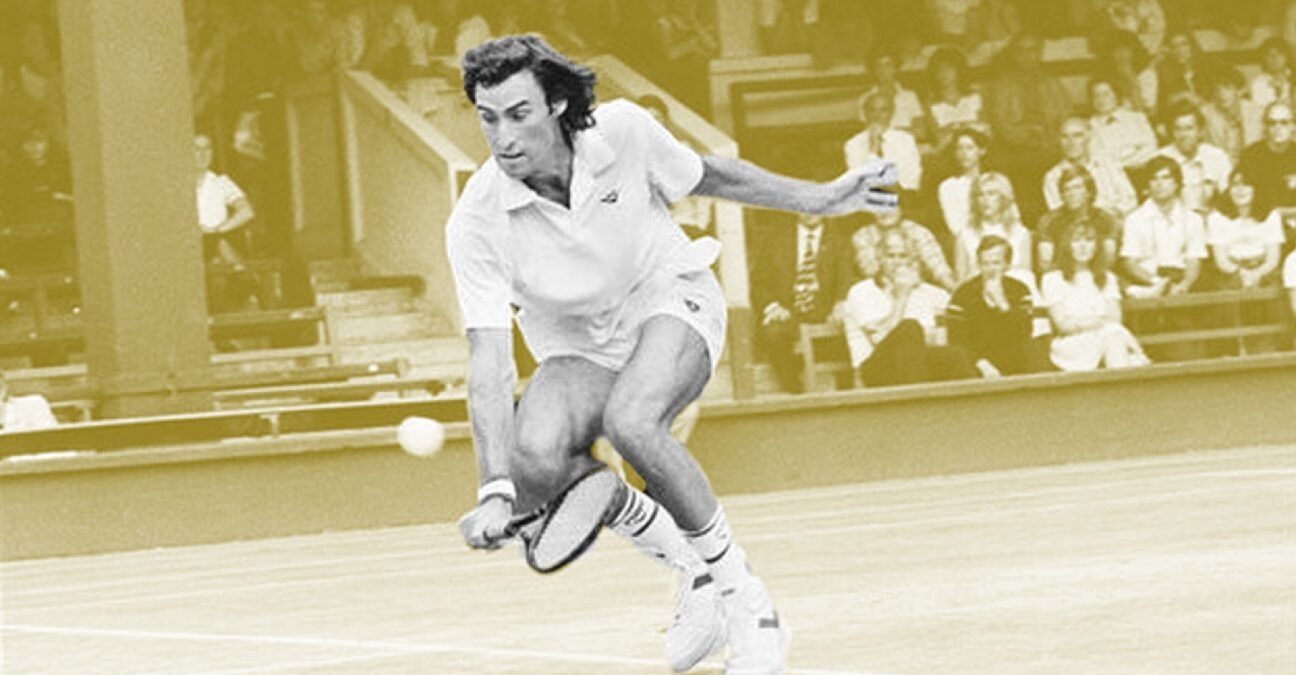 Brian Teacher On this day 04.01.2021
Image Credit – Panoramic/ Tennis Majors
Brian Teacher On this day 04.01.2021
Image Credit – Panoramic/ Tennis Majors
What exactly happened on that day?
On this day, January 4, 1981, the unheralded Brian Teacher, who had never been past the fourth round at a Grand Slam before, defeated Kim Warwick (7-5, 7-6, 6-2) to win the 1980 Australian Open and claim the first and only Grand Slam title of his career. Teacher had almost pulled out of the tournament because of marital problems but had finally decided to enter the event.
The players: Brian Teacher and Kim Warwick
- Brian Teacher: The top 20 American who had reached five consecutive finals
Born in 1954, Brian Teacher studied and played tennis at the University of South California until he decided to turn pro in 1976. Playing serve-and-volley, he was more comfortable on fast surfaces, and after claiming his first two titles on carpet in 1977 and 1978, he won the biggest tournament of his career on grass in 1979, defeating Stan Smith in the Newport final (1-6, 6-3, 6-4). In Grand Slam tournaments, he reached the fourth round at the US Open in 1978 (defeated by Johan Kriek, 7-6, 6-3, 7-6) and at Wimbledon in 1979 (lost to Bjorn Borg, 6-4, 5-7, 6-4, 7-5). Prior to the 1980 Australian Open, he finished runner-up in five consecutive tournaments and was ranked No 17 in the world when the tournament began.
- Kim Warwick: The top 40 player from Australia
Kim Warwick, from Australia, was born in 1952. Ranked 36th in the world, he claimed the most important of his three titles in November 1980 in Johannesburg, defeating Fritz Buehning in the final (6-2, 6-1, 6-2). His best Grand Slam result had been reaching the quarter-finals at the 1975 Australian Open (defeated by Jimmy Connors, 6-3, 6-2, 6-2). Warwick was also famous for missing 11 match points before losing to Adriano Panatta in the first round of the 1976 Italian Open.
The place: Kooyong Stadium, Melbourne
Unlike the other Grand Slam tournaments, the Australian Open (first known as the Australasian Championships and, later, the Australian Championships) had moved locations several times over the years. In fact, the event switched cities every year before it settled in Melbourne in 1972, and no fewer than five Australian cities had hosted the event at least three times; Melbourne, Sydney, Adelaide, Brisbane and Perth.
The event was held on grass at the Kooyong Stadium, in a wealthy eastern suburb of Melbourne. Its timing had changed several times as well, between early December and January, going from being the first Grand Slam of the year to being the last. At the time, many of the best players skipped the Australian Open, mainly because of the remoteness, and the low prize money.
The facts: Teacher pulls out of Australian Open but luck gets him back into the draw
The first player to reach the final of the 1980 Australian Open, Teacher had originally pulled out of the tournament. After his loss in the Sydney final, he called his wife to tell her about the match points he had missed and she responded by saying that she wanted a divorce. Teacher intended to fly home to fix his sinking marriage: “I actually called up (Australian Open tournament director) Colin Stubbs and pulled out of the draw. I told Colin I had hurt my back from all those finals in a row and he said, ‘Too bad.’”
However, he was convinced not to do so by his father-in-law, and the Australian Open director managed to sneak him back into the main draw: “You know Brian I can’t do that, I just took you out of the draw and put somebody in, but I think somebody else is pulling out of the tournament so let me see what I can do, but you can’t tell anybody because I’m not supposed to do this,” he said.
Teacher, who had reached five consecutive finals prior to the event, was in great shape and his serve-and-volley game was particularly dangerous on grass. The three best players in the world had once again skipped the event, and he made his way into the final, defeating Peter McNamara in the semi-finals (6-7, 7-5, 6-3, 6-4).
In the final, he faced local player Warwick, who, unfortunately, entered the court with no fuel left, as his semi-final clash against the double defending champion Guillermo Vilas had been played over two days. As a consequence, on January 4, 1980, Warwick started the day by finishing off Vilas (6-7, 6-4, 6-2, 2-6, 6-4), before winning the doubles final (partnering Mark Edmondson). His shoulder was already killing him and he had received a pain-killing injection before the doubles.
“I don’t want to use it as an excuse, I probably wouldn’t have won anyhow,” Warwick said, according to The New York Times. He said that when he woke up on the day, he found he could not even raise his right arm. “I couldn’t pick up a cup of tea,” he said.
In this context, there was little surprise to see Teacher prevail 7-6, 7-5, 6-2. “Until today, I didn’t think I would ever win a Grand Slam tournament,” said the unlikely 1980 Australian Open champion. “It feels great. Possibly I felt I really would like to win the tournament and I was pretty determined to fight the whole way. Winning now will give me a lot of confidence.”
What next? Teacher breaks into top 10 while Warwick reaches top 15
Teacher would reach his highest ranking, world No 7, in May 1981. In the following years, he would add four titles to his list of achievements, the most important one in 1982 in Dortmund (defeating Wojtek Fibak in the final, 6-7, 6-4, 6-4, 2-6, 6-4). In 1982, he would reach the quarter-finals at Wimbledon (defeated by Tim Mayotte, 6-7, 7-6, 7-5, 3-6, 6-1) and at the Australian Open (lost to Hank Pfister, 6-1, 6-3, 6-7, 1-6, 7-6).
Reaching world No 15 in 1981, Kim Warwick would make the quarter-finals at the Australian Open in 1981 (defeated by Pfister, 6-1, 4-6, 6-4, 6-3) and at the US Open in 1982 (lost to Ivan Lendl, 6-4, 6-3, 6-1).
